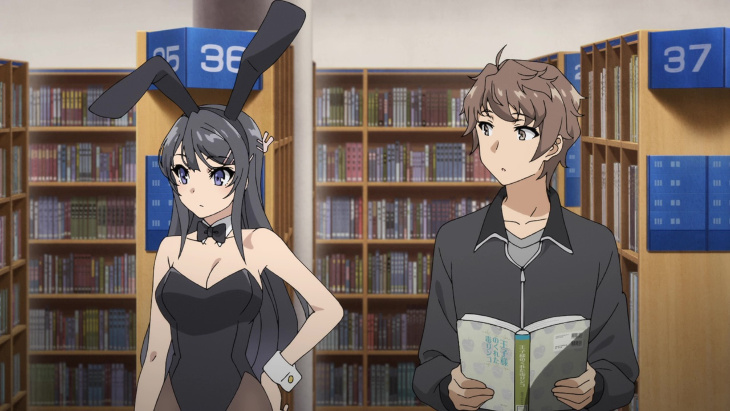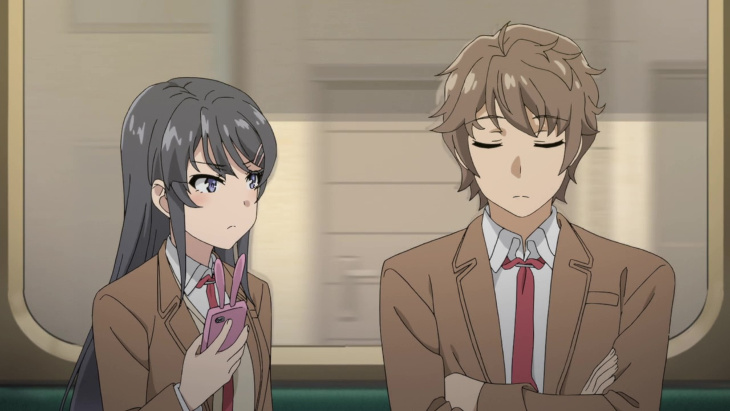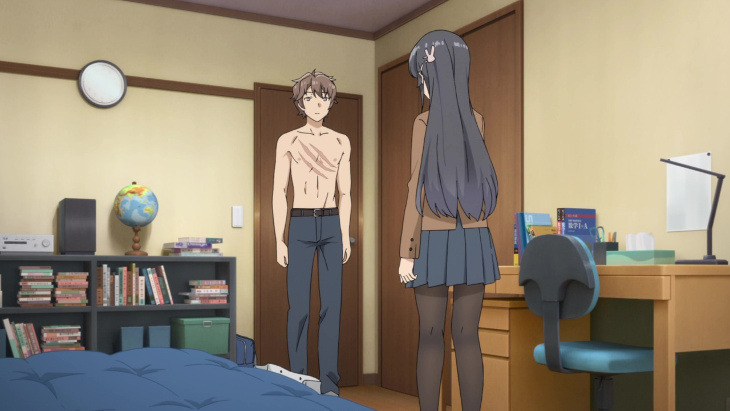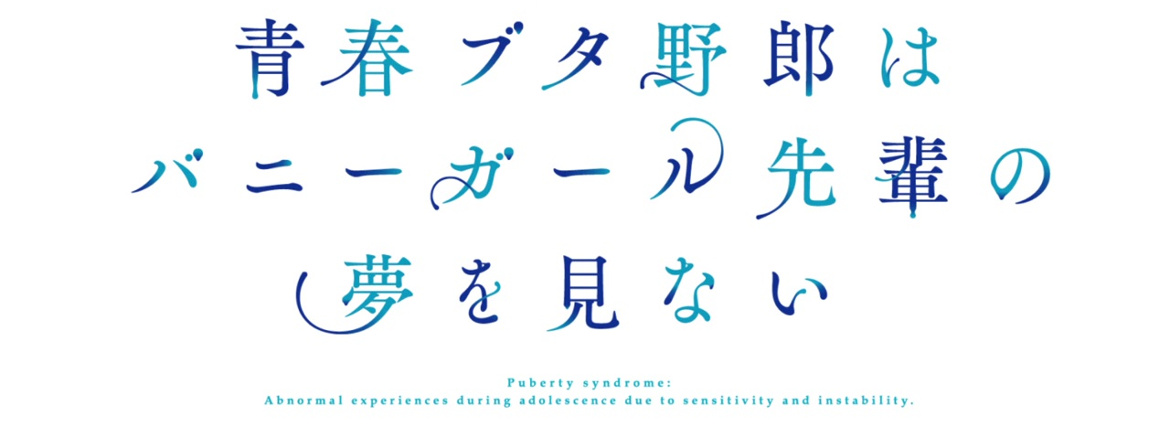
“I’m Sakurajima Mei. Sakurajima is spelled like Sakurajima Mei, and Mei is spelled like Sakurajima Mei.”
How did this end up being decent? Seishun Buta Yoru wa Bunny Girl Senpai no Yume wo Minai or Rascal Does not Dream of Bunny Girl Senpai is a show that, from a glance, could go in one of two wildly different directions. The first direction would entail it being a schlocky excuse for some basic ecchi pandering. The latter direction would entail it being far more mature than the premise implies… If I had realized earlier that this was based upon the work of Kamoshida Hajime, the author of The Pet Girl of Sakurasou, I would have placed my bets on the latter direction. As it stands, I anticipated something trashy and dumb, and was shockingly surprised. It was to the extent that within the first 25 seconds I had concluded that I probably misjudged the show. The animation was too crisp for an ecchi comedy. I don’t feel entirely ashamed for being mislead by the title. Evidently, someone looked at the title of Mr. Kamoshida’s Seishun Buta Yarou, and concluded that title was too short and not weird enough. Consequently, we have a lengthy title which serves to obscure what seems to be a meditation on the nature of one’s identity and perception, and the influence that one’s surroundings have on it.

The show primarily lead is Azusagawa Sakuta, a high school student who, during a visit to the library, encounters Sakurajima Mai, a child actress and upperclassman at his school. To his mild surprise, she is dressed as a bunny girl and wanders around encroaching on other people without them noticing her at all. She warns him not to interact with her, but Sakuta’s curiosity is peaked. She comes to confide in him that she has found she can seemingly slip out of existence, as he shares his own story of “Adolescence Syndrome.” These are circumstances where a young individual claims to have experienced bizarre occurrences that are difficult to verify or explain. Mai’s attire was simply an experiment to test the degree to which people wouldn’t notice her. Despite the “Bunny Girl Senpai” hook of the show’s title, she doesn’t spend much time dressed like that, and the focus is more on the manner in which she and Sakuta have found themselves isolated. Things begin to escalate at the end when Sakuta begins to truly grasp the extent that Mai’s Adolescence Syndrome is altering the world around her.

Mai and Sakuta are really fun characters. Sakuta spends most of his time employing a lightly humorous deadpan, not unlike Oreki Hotaro of Hyouka or Kyon from Haruhi Suzumiya. This is a character type that can be very fun when executed correctly, and he bounces off of Sakuta’s slightly aloof and combative personality quite nicely. She could almost be characterized as a tsundere, but I feel that’s oversimplifying her. Her combativeness is usually not unwarranted, as Sakuta seems to enjoy prodding her verbally, though this treatment evidently isn’t reserved just for her. I mentioned before that the art served as a cue that I had misjudged the show. In my experience, most ecchi shows tend to favor a more cartoonish style than what is seen here. It makes sense. A more cartoonish style allows for animators to provide more… bounce to certain characters’ anatomy, and it allows for such a series to segue into slapstick with greater ease. Seishun Buta Yarou uses a more crisp and rigid aesthetic that, I think, is more commonly favored by dramas. CloverWorks is handling this adaptation’s production, and, so far, they’ve delivered. This is the first work by them that I’ve sampled, though they previously co-produced Darling in the Franxx with Studio Trigger and were behind the Persona 5 adaptation. They’re also taking the reins on Ace Attorney Season 2 and Dakaichi, both of which premiere later this week. Ultimately, I’ve been impressed with this initial episode, and hopefully I will have the opportunity to stick with it.
Before I wrap up, a few Notes and Nitpicks:
- I’m sorry to say I never actually finished watching The Pet Girl of Sakurasou. Despite an off putting title, it was actually a fun and introspective series, based on my limited viewing. Sounds familiar.
- At one point, Sakuta wakes to find his sister, Kaede, who also faces substantial social issues, had slipped into his bed in the night. This leads to an exchange where he berates her for the “embarrassing setup” and she implies the only reason he doesn’t want her doing that is because it would make him excited. He smacks that theory to earth with a degree of certainty that I appreciate.
- I get a sneaking suspicion that this series may go very well with the Radiohead song “How to Disappear Completely.”




Add comment